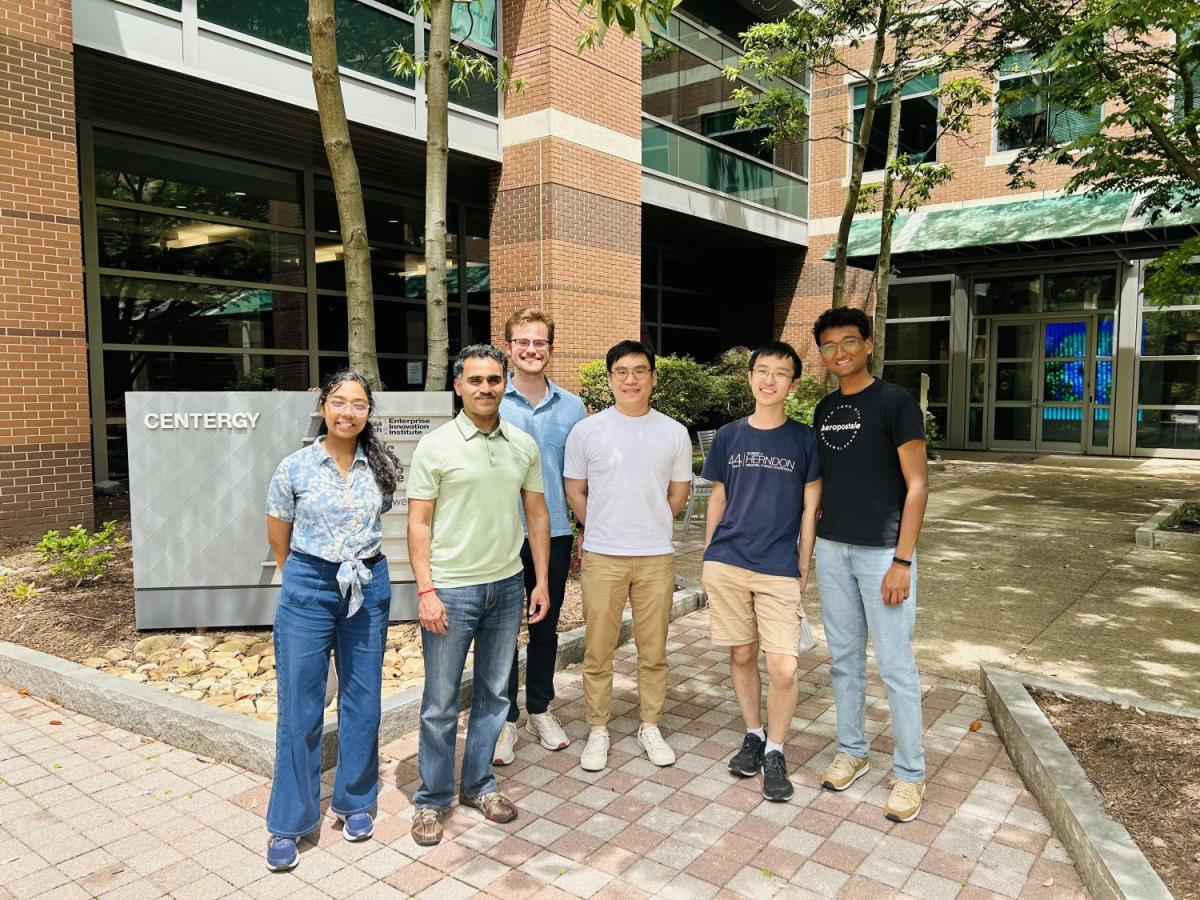
The Mobile Advanced Research at Georgia Tech (MARGA) group was recently awarded a $600,000 grant to continue research on acoustic wave IoT sensors.
Acoustic waves are everywhere.
From the sound of your voice and car horns on the road to the beep as the timer hits zero on the microwave, they’re central to almost everything humans do every day.
Georgia Tech School of Electrical and Computer Engineering (ECE) Professor Karthikeyan Sundaresan thinks they can do more.
He and his Mobile Advanced Research at GeorgiA Tech (MARGA) research team are working on using these acoustic waves to make scalable Internet of Things (IoT) sensors.
The group recently received a $600,000 grant from the National Science Foundation to support the promising research.
“It is exhilarating that NSF recognizes the potential for this complementary communication modality for IoT applications,” Sundaresan said. “ While numerous challenges remain, their potential in IoT and particularly in spatially immersive applications, is super exciting.”
IoT sensors are specialized electronic devices that sense, detect, and measure various parameters in our physical environment and relay the information back to a receiver.
They have many uses, including warehouse management, smart home automation, and front-end retail management. Apple Airtags also use this technology.

IoT sensors are used in many places such as warehouses and airports, where the efficient flow of information is critical to operations.
Right now, many of these sensors use radio frequency (RF) waves, which are one of the most commonly used frequencies. This popularity has caused the bands to become too crowded in many places.
“There’s so many Wi-Fi devices, Bluetooth devices,” Sundaresan said. “We're just adding more and more to the same spectrum that you just don't have enough bandwidth. When these devices operate, they get interfered by the other devices.”
The constant interference also causes the devices to constantly refresh and retransmit their signals. This leads to batteries dying faster and devices in need of more frequent replacement.
“We asked ourselves, ‘Are there other ways of doing things in a sustainable manner for Internet of Things?’” he said.
Acoustic waves are one of the next most popular frequencies and a great alternative in RF-contested environments, such as warehouses and airports.
Though promising, acoustic waves do have some disadvantages of their own that Sundaresan and his group needed to overcome. First, they don’t go very far.
“They are a different type of wave that gets blocked by anything and everything,” Sundaresan said.
To deal with that, he and his team went with a strength in numbers approach. Though individually the sensors aren’t super powerful, together they can transmit great distances.
The power scales up not by the size of the sensor but by the size of the group. More sensors, more gain, more transmitting power.
“Depending on the needs of your application, you decide how many you want to deploy on any particular object or product,” he said. “You have a product that's only couple of meters from your phone, then you can add two simple low power acoustic tags.”
The second problem is with acoustic waves is interference. Just like a room full of talking people combining to create unintelligible noise, the same can happen to sensors. The signals can become drowned out in busier environments.
To address this, Sundaresan and his team used a directionally focused transmission process known as beamforming. Beamforming helps the sensors achieve more energy efficiency and strengthens the signal.

Once in place, the sensors intelligently pair with each other forming a virtual array so they can beamform the signal to each other and a receiver (i.e. phones).
“Typically, when you don't focus where the energy is going, your signal propagates in all 360 degrees,” Sundaresan said. “That wastes a lot of energy.”
The increased strength resulting from beamforming, as well as its directionally focused nature allows the acoustic waves to cut through any ambient noise and avoid getting drowned out or interfered with.
Each sensor is then able to intelligently process this energy, syncing up with the other sensors to create usable information on the backend.
The process essentially mimics the synchronization of speaker systems without the wiring.
The sensors were also engineered to transmit at a higher acoustic frequency as to not interfere with humans’ hearing.
“We make sure the energy does not leak and create nuisance to humans,” Sundaresan said.
The work has received plenty of other recognition, including winning the best paper runner up award at ACM/IEEE International Conference on Information Processing in Sensor Networks (IPSN) over this summer.
The possibilities for the technology are endless, according to Sundaresan.
Right now, it’s warehouses and smart homes, but someday he sees the technology being in many places, including telehealth, personalized spatial audio, immersive 3D experiences, vehicle synchronization, and more.
Related Content
Study Finds Thousands of Browser Extensions Compromise User Data
Research from Georgia Tech reveals thousands of browser extensions pose significant privacy risks by extracting sensitive user data from web pages, highlighting a need for stricter privacy measures and better enforcement.
Citrin’s Terahertz Imaging Technology Speeds Up Bulk Document Scanning
The research completed out of the Terahertz Laboratory has the potential to count and measure stacks of paper in a fraction of the time of current scanners.

